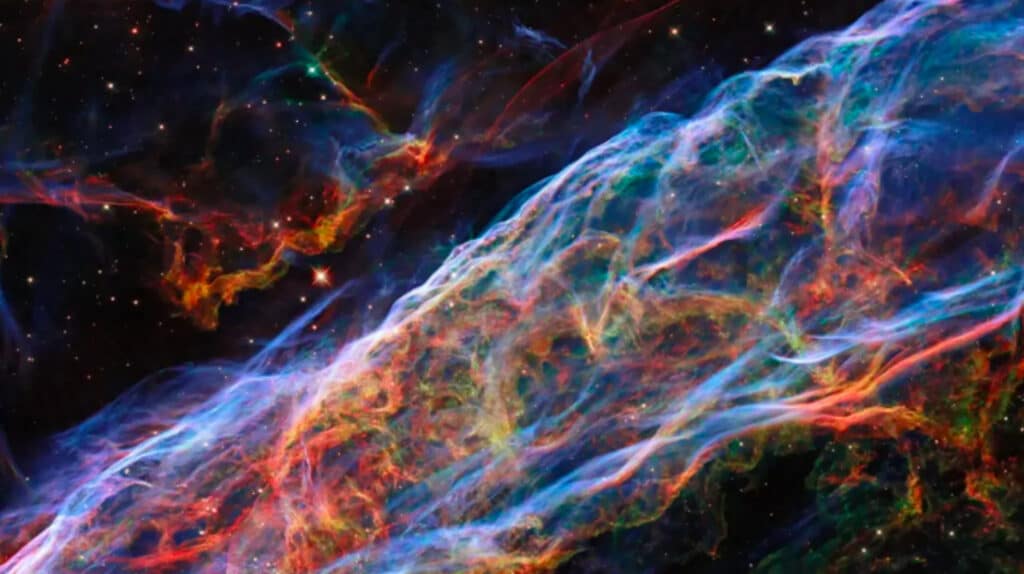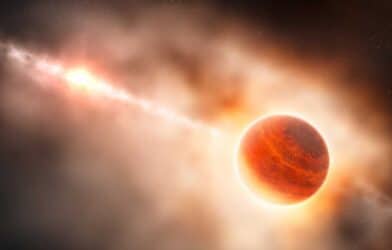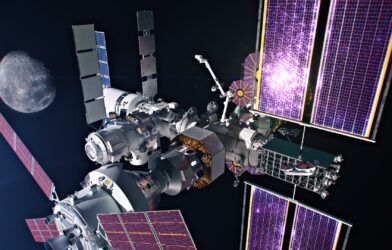Scientists are seeking to explore how explosive stellar deaths contribute to the formation of new star systems in a new NASA sounding rocket mission. The Integral Field Ultraviolet Spectroscopic Experiment, also known as INFUSE, launched Sunday, Oct. 29 from the White Sands Missile Range in New Mexico.
In the night sky, the constellation Cygnus, also known as “swan” in Latin, makes a seasonal appearance, and just above its wing lies a celestial wonder known as the Cygnus Loop or the Veil Nebula. This remarkable cosmic feature is the remnant of a massive star that once dwarfed our sun in size. Some 20,000 years ago, this colossal star underwent a dramatic transformation, collapsing under its own gravitational forces and exploding into a brilliant supernova. Even from its distant location 2,600 light-years away, this event would have emitted a dazzling burst of light, potentially visible on Earth during the day.
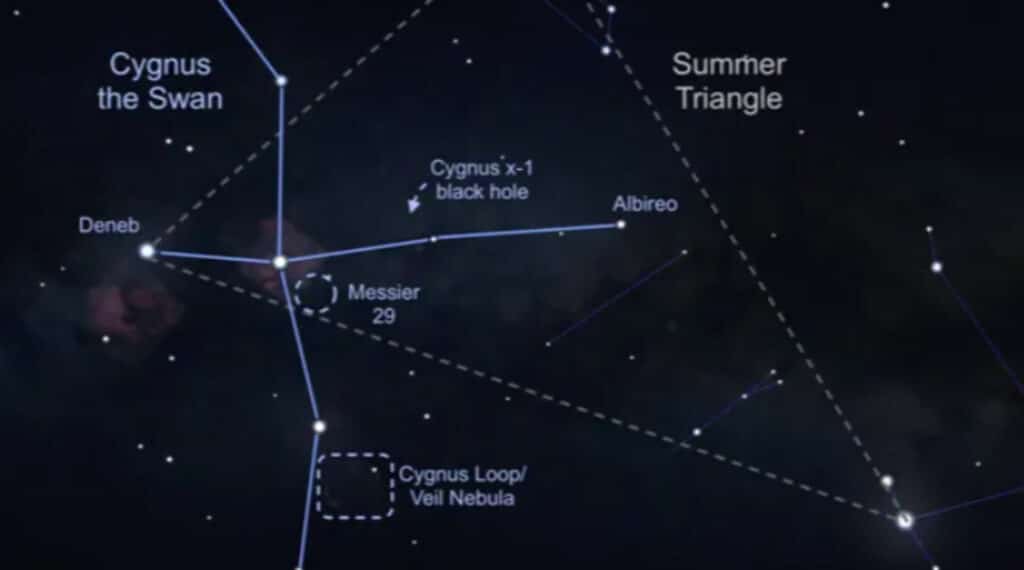
Supernovae, such as the one responsible for the Cygnus Loop, play a pivotal role in the life cycle of the universe. They release heavy metals, formed in the cores of stars, into the surrounding dust and gas clouds. These elements are the building blocks of all matter in the universe that is heavier than iron, including the elements that make up our own bodies. Over time, the gases and dust ejected by supernovae come together, forming planets, stars, and new star systems.
“Supernovae like the one that created the Cygnus Loop have a huge impact on how galaxies form,” says Brian Fleming, a research professor at the University of Colorado Boulder and principal investigator for the INFUSE mission, in a media release.
What makes the Cygnus Loop particularly intriguing is that it offers a rare opportunity to observe an ongoing supernova explosion. Spanning over 120 light-years in size, this colossal cloud of matter is still expanding today at a staggering speed of around 930,000 miles per hour.
The light we observe from the Cygnus Loop is not a direct view of the supernova explosion itself. Instead, we see the aftermath, with dust and gas heated to extreme temperatures by the shock wave, causing it to glow as it cools.
“INFUSE will observe how the supernova dumps energy into the Milky Way by catching light given off just as the blast wave crashes into pockets of cold gas floating around the galaxy,” notes Fleming.
To capture this data, the research team has developed a specialized telescope capable of detecting far-ultraviolet light, which is too energetic for the human eye to perceive. This type of light reveals gas temperatures ranging from 90,000 to 540,000 degrees Fahrenheit, showcasing the residual heat from the impact.
The INFUSE instrument represents a groundbreaking approach in space exploration as the first integral field spectrograph to venture into space. It combines two distinct methods for studying light: imaging and spectroscopy. Traditional telescopes excel at producing images that display the source of light and its spatial arrangement. However, these telescopes do not separate light into its individual wavelengths or “colors”; instead, all wavelengths are combined into a single image.
On the other hand, spectroscopy dissects a beam of light into its constituent wavelengths, akin to how a prism forms a rainbow from white light. This process provides detailed information about the source’s composition, temperature, and motion. However, traditional spectroscopy examines only a narrow band of light at any given time, offering a limited view.
The INFUSE instrument captures an image and subsequently divides it into multiple “slices,” aligning these slices into a single, comprehensive “keyhole.” This allows the spectrometer to disassemble each slice into its distinct spectrum. The resulting data can then be reassembled into a 3D image referred to as a “data cube,” offering a stack of images, with each layer revealing a specific wavelength of light.
“It’s a very exciting project to be a part of,” says CU Boulder lead graduate student Emily Witt, who led most of the assembly and testing of INFUSE and will lead the data analysis. “With these first-of-their-kind measurements, we will better understand how these elements from the supernova mix with the environment around them. It’s a big step toward understanding how material from supernovas becomes part of planets like Earth and even people like us.”
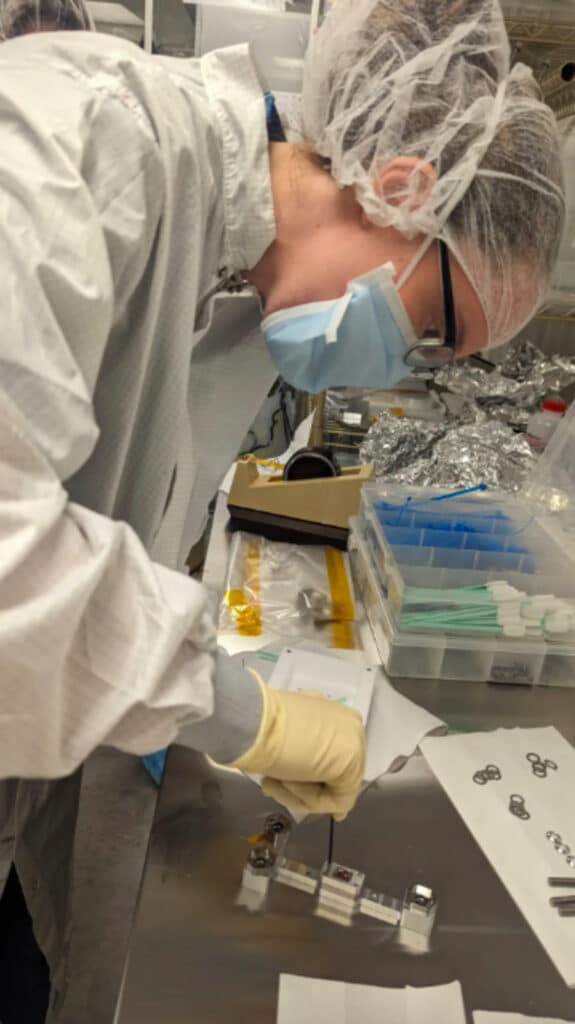
To reach space, the INFUSE payload will embark on a sounding rocket, which is a nimble, unmanned rocket designed for brief missions to collect data before returning to Earth. The INFUSE payload will be aboard a two-stage Black Brant 9 sounding rocket, aiming for a peak altitude of about 150 miles to conduct its observations before parachuting back to the ground for recovery. The research team envisions future upgrades for the instrument, with parts of the INFUSE rocket repurposed from the DEUCE mission, which launched from Australia in 2022.
The NASA Sounding Rocket Program, administered at the Wallops Flight Facility in Wallops Island, Virginia, and managed by NASA’s Goddard Space Flight Center in Greenbelt, Maryland, oversees sounding rocket missions for the agency. NASA’s Heliophysics Division manages the sounding rocket program, and the development of the INFUSE payload received support from NASA’s Astrophysics Division.
